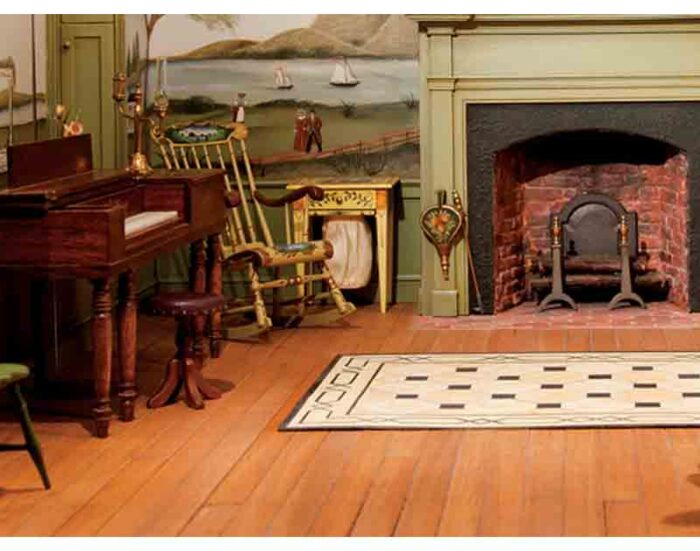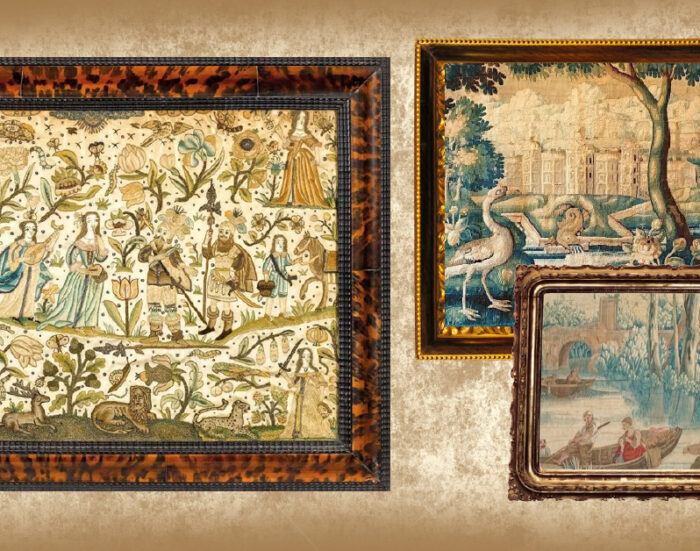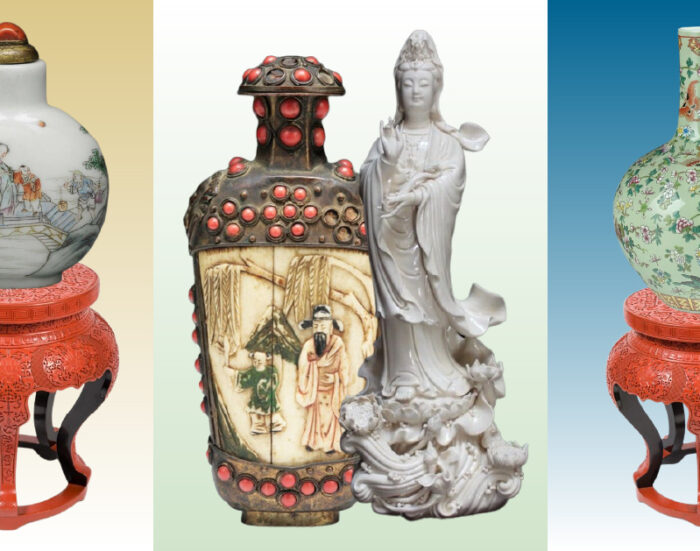Where Can I Sell American Furniture & Folk Art?
If you want to sell your American furniture or folk art, you should look for a buyer who knows how valuable and beautiful your items are and is willing to pay a fair price. A Chippendale highboy, a Shaker table, or a bright piece of American folk art are all treasures that tell stories about history and how things are made. You should think about how to sell these items so that you get the best price and they go to a good home. It can be hard to work with buyers who don’t know much about the market because they might not value your items fairly or try to get a better deal. If you want to get the most money for your antiques, you should work with honest appraisers and auctioneers. This is a full guide to selling your American folk art and fine furniture.
Step 1: Get an expert opinion
Before you sell your antique furniture or folk art, find out how much it’s worth. An expert in American antiques can tell you how much your item is worth by looking at its age, condition, origin, rarity, and how much people want it right now. Don’t sell your treasure for less than it’s worth just because you don’t know how much it’s worth. This step is very important.
Why Getting an Appraisal Is Important
An appraisal shows more than just how much something is worth. For instance, a Federal-style mahogany sideboard from the early 1800s may be worth more if it has the name of a famous craftsman like Duncan Phyfe on it. There may also be a lot of value in an old folk art painting from a certain area, like a Pennsylvania Dutch piece. An experienced appraiser will look over these details and write a full report to help you set realistic goals for selling.
How to Look for a Good Appraiser
You should look for appraisers who work for well-known groups like the American Society of Appraisers (ASA) or the International Society of Appraisers (ISA). These experts follow strict ethical rules and know a lot about American folk art and furniture. If an appraiser offers to buy your things right away without giving you a formal appraisal first, be careful. This could mean they have a conflict of interest. A fair appraiser will give you an honest price and usually charges a flat fee or an hourly rate.
What to Look Forward to During the Appraisal
The appraiser will look at your item to make sure it is real, in good shape, and has historical value. They might want to know where the item came from, if it came with any paperwork, and if it had any repairs done to it before. For example, a Shaker piece that is in great shape can be worth a lot more than one that is worn out or badly restored. You can use the appraisal report to help you sell or negotiate.
First Choice: Selling at an Auction
Reputable auction houses let you buy and sell fine American furniture and folk art. Serious collectors and sellers who know a lot about antiques go to auctions. Bidding against others often makes prices go up more than you thought.
Benefits of Selling at Auction
There are a number of important benefits to auction sales for people who sell fine American furniture and folk art. They usually get more bidders than private sales do. This can lead to bidding wars over rare items, like an 1800s painted New England blanket chest, which can raise the final sale price by a lot. Also, auctions attract qualified buyers like museum curators, interior designers, and private collectors who know a lot about American antiques. This makes sure that your items go to people who are knowledgeable and really want them. Auction houses also offer professional marketing services by handling advertising, cataloging, and displaying your items with clear pictures and detailed descriptions. This draws in motivated buyers and increases your chances of making a sale.
Things to Think About
Auctions can be profitable, but they come with costs like seller’s commissions (which are usually 10% to 25% of the final price) and extra fees for taking pictures, making catalogs, or storing items. Before you give your things to an auction house, make sure you know their rules. Pick an auction house that is known for Americana, like Sotheby’s, Christie’s, or a smaller, more specialized local company like Skinner or Pook & Pook.
How to Get Ready
Before you sell your fine American furniture or folk art at auction, you should think about a few important things to make sure you have the best chance of success. First, talk to the auction house to find out when the best time for your sale would be. For example, you could schedule your items for an Americana-only auction when interest is highest. Setting a reserve price is also important to protect your interests because it sets a minimum amount that your item won’t be sold for. Providing provenance, which is any documentation or historical information that backs up the authenticity and story of your piece, can also make it much more appealing to potential buyers and raise its value.
Another choice: Selling to antique dealers or appraisers
You could also sell directly to people who know a lot about American furniture and folk art and the market. Appraisers who also buy and sell or know collectors can give you a fair price or connect you with buyers who are interested.
Why should you sell to dealers or appraisers?
There are some clear benefits to selling your fine American furniture or folk art to dealers. Dealers who know a lot about American antiques can quickly tell if your carved folk art figure or Queen Anne chair will sell and fit in with what people want right now. With this information, they can make smart offers and give advice throughout the process. Also, selling to a dealer is usually easier and faster than auction because you usually get paid right away after you accept their offer. Dealers also often have established relationships with clients and institutions that want to buy these kinds of things, so you can be sure that your piece will find a good home.
Things to be careful about when selling to dealers
Make sure that any offer is fair and based on a good assessment. To see how interested the market is, compare offers from different dealers. Be careful of dealers who pressure you or offer prices that are much lower than the market value. This could mean that they are trying to take advantage of your lack of market knowledge.
Getting to Know Each Other
It can be helpful to find a dealer you can trust if you have a lot of things to sell. They can help you sell your home, tell you about market trends, and help you with future appraisals or sales.
More Tips for Selling Your Antiques
It is important to look at past auction results on sites like LiveAuctioneers or Sotheby’s to get an idea of the market before you sell your fine American furniture or folk art. This will help you set realistic expectations and understand how much similar items have sold for recently. You shouldn’t try to restore something yourself unless you are a professional. Cleaning or fixing something incorrectly, like taking off the patina, can lower its value a lot. Auctions and dealers are usually better for selling high-value items, but online marketplaces like 1stDibs or eBay can work for lower-value items as well. However, they take more time to list and check out potential buyers. Lastly, keep detailed records like appraisals, messages with buyers, and proof of ownership to help with negotiations and make sure the deal goes smoothly.
Why should you hire experts?
Experts understand how valuable and important your fine American furniture and folk art are. They put you in touch with buyers who know what they’re doing, whether you want the thrill of an auction or the ease of selling to a dealer. Antique Appraisers Auctioneers can help you with appraisals, help you bid at auctions, or buy things directly. We help you get the most money for your valuable items. Get in touch with us today.
Best Places to Sell Antique Textiles: A Guide for Textile Art Enthusiasts
Are you a textile art collector? Do you have a beautiful collection of vintage textile art you plan to sell? If yes, it’s crucial to discover the right markets where you can get the best value.
If you’re unsure about the best places to sell antique textiles, you’ve landed on the right blog post. In this guide, we’ll walk you through top venues and options that connect you with serious collectors and antique textile dealers.
Start with an Antique Textile Appraisal
Before selling your antique textiles, it’s important to get a professional appraisal. Expert appraisers have years of experience with textiles and can help you determine their market value.
Why Appraisal Matters
A proper appraisal offers insights into the historical significance, rarity, and condition of your textiles. Once you understand these factors, you can price your pieces confidently and negotiate with prospective buyers.
-
Professional Appraisers
Opt for reliable antique textile appraisal services before you consider selling your antique textiles. Appraisers typically possess a lot of experience in textiles. So they can assist you in the best possible manner to determine the value of your pieces. As a result, you are assured of getting a precise assessment of their worth.
-
Getting an Idea About the Value
The appraisal process will help you to gain a good understanding of the historical significance, rarity, and condition of your antique textiles. Once you know all these, you can set prices confidently. Also, it will help you to negotiate with prospective buyers.
Top Paces to Sell Antique Textiles
Below, we are going to talk about some best places which you can consider for selling your antique textiles:
-
Specialized Antique Shops
One of the best places for showcasing your collection involves antique shops that deal with vintage textiles. You will also find antique textile dealers who always appreciate and look for unique pieces. One of the best places for showcasing your collection involves antique shops that deal with vintage items or textiles. You will also find regular patrons at this place who always appreciate and look for unique pieces.
-
Online Auction Platforms
Online auctions give your collection global exposure. Many antique textile auctions are held on platforms that specialize in vintage and antique art sales. These platforms attract textile enthusiasts, dealers, and private collectors from all over the world.
💡 Tip: Keep an eye on upcoming textile auctions to time your listings when buyer activity is high.
-
Art Galleries
Many art galleries near your location are known for exhibiting and selling antique textiles. So, they prefer to add new items to their collections. You can reach out to these galleries to connect with prospective buyers interested in your antique textiles.
-
Art and Antique Fairs
Participating in art and antique fairs can put your collection in front of a live audience. These events draw collectors who are genuinely interested in vintage and antique fabrics for sale, making them ideal for high-value transactions.
-
Online Forums and Social Media
Communities on platforms like Reddit, antique-focused forums, and Facebook groups provide excellent opportunities to display your textiles. These networks connect you with niche audiences that appreciate vintage textile art and are often eager to buy.
Conclusion
Overall, selling your antique textile collection is a rewarding experience whenever you reach out to the right buyers. Whether you’re dealing with antique fabrics for sale or a museum-worthy piece of vintage textile art, working with professionals helps maximize value. You should always consult a reputable appraiser or antique expert for a professional evaluation before selling your items.
Be sure to seek a proper appraisal to understand the provenance, condition, and worth of your items. Then explore trusted platforms, from antique textile auctions to art fairs and galleries, to find the perfect buyer.
Examining the Future of the Chinese Antiques Market
For many years, there was a steady and growing market for Chinese antiques. This was fueled by Chinese antique buyers who came from the newly wealthy class in Asia and the West. It was also fueled by rising worldwide interest in Chinese culture, which prompted art collectors all over to buy Chinese antiques. However, in the past few years, there has been speculation that the boom in Chinese antiques is coming to an end. This is not surprising, as factors such as a cooling of the Chinese economy, the global pandemic, and rising political tensions lead people to think that it is inevitable that Asian antiques buyers will sour on Chinese antiques. In this article, we will look at whether the boom in Chinese antiques is coming to an end.
Signs the Chinese antiques market might be slowing down:
In 2019, the Global Chinese Art Auction Market Report indicated that sales of Chinese art and antiques reached $5.7 billion dollars for the year. This staggering figure shows the buying power of Chinese antique buyers, but it was down 10% from the previous year. Total auction sales in mainland China also fell by 10% that year. Sales of Chinese art and antiques were also down by 9% outside of China during that period. However, that doesn’t mean that you should not buy Chinese art and antiques.
Why we buy Chinese Antiques:
Don’t pass on that piece of Chinese art or that Chinese antique yet. If you come into possession of a Chinese antique, don’t just give it away or throw it out. There is still major demand for Chinese art and antiques out there. Discerning Chinese antique buyers are still willing to pay top price for authentic pieces. All of the six most expensive Chinese art pieces were sold by Sotheby’s Asia in 2019, showcasing the value and prestige of Chinese antique auctions. Also, in July of 2019, a Chinese vase that was originally purchased for fifty pounds was sold for $9,084,486! Never underestimate the appetite of Asian antiques buyers for genuine Chinese art.
Don’t underestimate the Chinese economy either. China still has a strong GDP, massive industry, and financial capital. It regularly competes with the United States to have the world’s largest economy. This translates into a growing middle and upper class with the wealth and interest in art, becoming frequent Chinese antique buyers.
In addition, there is a constant fascination with Chinese art and antiques in the global market. This enduring interest goes back centuries and has led to a huge market of Chinese antiques and artwork around the world. It also means that Asian antique buyers continue to take an interest in the global art market as they search for Chinese antiques.
Online is a great place to buy and sell Chinese antiques:
If you’re wondering how to sell Chinese antiques, online platforms like ours provide expert appraisals and direct access to serious buyers.The digital age has continued to transform buying and selling Asian antiques online, especially among young, tech-savvy collectors. Many of the up-and-coming wealthy Chinese antique buyers are young. They are driving the increasingly popular online auctions and buying and selling antiques online. At antiqueappraisersauctioneers.com, we buy Chinese antiques and help clients get them appraised and sold for the best possible value.Whether you are looking to auction Chinese antiques or find rare Asian collectibles, online platforms have become the go-to marketplace.
In conclusion, while there are indications of a potential slowdown in the Chinese antiques market, there are still compelling reasons to consider investing in Chinese art and antiques. The enduring demand from discerning Chinese antique buyers, the strength of the Chinese economy, and the global fascination with Chinese culture contribute to the market’s resilience. Furthermore, the digital marketplace provides convenient avenues for buying and selling Chinese antiques. Therefore, it is premature to write off the future of the Chinese antiques market.







